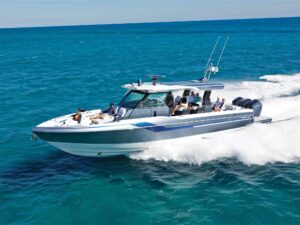How thorough were you when winterizing your outboard last fall? If you did it right, you should be able to start up and go.
But if you didn’t follow proper winterization and preventive maintenance procedures, your spring start might sputter. So before you launch, here’s a mix of fixes that should catch any autumn oversights so your engine emerges from winter unscathed.
Let’s start at the top. Pop the cowling. Depending on your storage situation, you never know what’s underneath-check for nests made by critters that crawled in for a winter home. Make sure the wiring, valves, and vents haven’t been compromised.
Due to the volatility of modern gasoline, fuel begins to break down after 30 days. So if you didn’t add a stabilizer in autumn, you may need your injectors or carburetor rebuilt. It’s best to store your boat with a full fuel tank to keep condensation to a minimum. But if you forgot, fill the tank to the brim now to dilute any moisture before running the engine for any length of time. Fill the tank and add a fuel conditioner. Be prepared for multiple water separator changes until you’ve burned that tank.
Next, start the engine on “earmuffs,” or take a quick ride. Turning over the engine and running it for a few minutes should burn off any remaining lubricant and protectant you squirted into the cylinders to prevent rust. Your plugs should be changed after this, as they will be fouled.
While your engine is running, check for a steady stream from the water pump. You might have flow interrupted from debris clogging the outlet or from an impeller whose blades have taken a set during storage. Clean the hole with a paper clip to unclog any detritus, and replace the impeller if necessary.
Elsewhere, if you didn’t do it already, grease the pivot and steering joints to provide lubrication for free movement of the tilt and trim and steering. You should replace the lube in the lower unit, too, if you didn’t do it last fall. Check the sacrificial anodes and check the skeg. And, finally, pull off the prop and grease the propshaft and check the hub.
Another consideration: With some EFI engines, the internal computer monitor can slowly drain your battery-the computer draws juice even if the engine isn’t in use. If you forgot to disconnect it last fall, you’ll need to charge your starter battery.








